Greatest Albums of All Time (Part 2)
The Beatles: Meet the Beatles
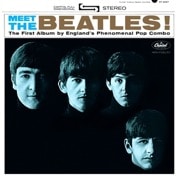 The second Beatles album released in the United States. It was the first US Beatles album to be issued by Capitol Records, on 20 January 1964 in both mono and stereo formats.
The second Beatles album released in the United States. It was the first US Beatles album to be issued by Capitol Records, on 20 January 1964 in both mono and stereo formats.
It topped the popular album chart on 15 February 1964 and remained at number one for eleven weeks before being replaced by The Beatles’ Second Album.
The cover featured Robert Freeman’s portrait used in the United Kingdom for With the Beatles, with a blue tint added to the original stark black-and-white photograph.
Little Richard Here’s Little Richard
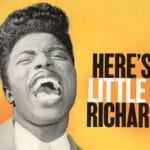 The debut album from Little Richard, released on March 1957. He had scored six Top 40 hits the previous year, some of which were included on this recording.
The debut album from Little Richard, released on March 1957. He had scored six Top 40 hits the previous year, some of which were included on this recording.
It was his highest charting album, at 13 on the Billboard Pop Albums chart. The album contained two of Richard’s biggest hits, “Long Tall Sally”, which reached #6 in the U.S. Pop charts, and “Jenny, Jenny”, which reached #10 in the U.S. Pop charts.
Buddy Holly and The Crickets: Chirping Crickets
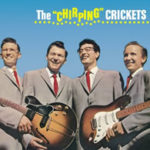 is the self-titled debut album from the American rock and roll band The Crickets, led by Buddy Holly. In 2003, the album was ranked number 421 on Rolling Stone magazine’s list of the 500 greatest albums of all time.
is the self-titled debut album from the American rock and roll band The Crickets, led by Buddy Holly. In 2003, the album was ranked number 421 on Rolling Stone magazine’s list of the 500 greatest albums of all time.
The LP was released in the US in 1957, and in the UK in 1958. It was re-released by Coral in 1962 as Buddy Holly and The Crickets. After being out of print for many years, it was reissued as a remastered CD in 2004 with bonus tracks.
John Lennon: Imagine
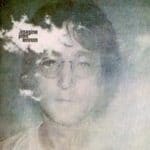 is the second studio album by John Lennon. Recorded and released in 1971, the album is more heavily produced in contrast to the basic, raw arrangements of his previous album, the critically acclaimed John Lennon/Plastic Ono Band. While in New York, former-Beatles John Lennon and George Harrison had a short jam session.
is the second studio album by John Lennon. Recorded and released in 1971, the album is more heavily produced in contrast to the basic, raw arrangements of his previous album, the critically acclaimed John Lennon/Plastic Ono Band. While in New York, former-Beatles John Lennon and George Harrison had a short jam session.
At this session, Lennon asked Harrison if he would like to perform on Lennon’s next album, with recording that was to begin in a week’s time at Lennon’s Ascot Sound Studios at his Tittenhurst Park residence.
Harrison said yes, and would ask friend and bassist Klaus Voormann, via a phone call, if he wanted to come to the recording sessions.
Crosby Stills & Nash: Crosby Stills & Nash
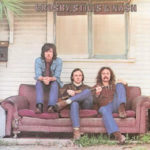 is the first album by Crosby, Stills & Nash, released in 1969 on the Atlantic Records label. It spawned two Top 40 hit singles, “Marrakesh Express” and “Suite: Judy Blue Eyes,” which peaked respectively at #28 the week of August 23, 1969, and at #21 the week of December 6, 1969, on the Billboard Hot 100 singles chart. The album itself peaked at #6 on the Billboard Top Pop Albums chart.
is the first album by Crosby, Stills & Nash, released in 1969 on the Atlantic Records label. It spawned two Top 40 hit singles, “Marrakesh Express” and “Suite: Judy Blue Eyes,” which peaked respectively at #28 the week of August 23, 1969, and at #21 the week of December 6, 1969, on the Billboard Hot 100 singles chart. The album itself peaked at #6 on the Billboard Top Pop Albums chart.
It was certified four times platinum by the RIAA for sales of over 4,200,000.
History The album was a very strong debut for the band, instantly lifting them to stardom. Along with the Byrds’ Sweetheart of the Rodeo and The Band’s Music from Big Pink of the previous year, it helped initiate a sea change in popular music away from the ruling late sixties aesthetic of bands playing blues-based rock music on loud guitars. Crosby, Stills & Nash presented a new wrinkle in building upon rock’s roots, utilizing folk, blues, and even jazz without specifically sounding like mere duplication. Not only blending voices, the three meshed their differing strengths, David Crosby for social commentary and atmospheric mood pieces, Stephen Stills for his diverse musical skills and for folding folk and country elements subtly into complex rock structures, and Graham Nash for his radio-friendly pop melodies, to create an amalgam of broad appeal.
The album features some of their best known songs: “Helplessly Hoping”, “Long Time Gone” (a response to the assassination of Robert F. Kennedy), “Suite: Judy Blue Eyes” (composed for Judy Collins) and “Wooden Ships” (co-written with Paul Kantner of Jefferson Airplane). Stills dominated the recording of the album. Apart from drums, handled by Dallas Taylor, he played nearly all of the instruments on the album. Nash played acoustic guitar on two tracks and Crosby rhythm guitar on a few. Stills played all the bass, organ, and lead guitar parts, as well as acoustic guitar on his own songs. “The other guys won’t be offended when I say that one was my baby, and I kind of had the tracks in my head,” Stills said.
David Crosby bristled over the plan for “Long Time Gone” as he thought he should at least play rhythm guitar on his own song. Stills convinced him to go home for a while and when he returned Crosby was won over by the music track that Stills and Taylor had recorded. In a more recent interview, Crosby contradicted his earlier statement, stating that he had played guitar on the track. The group performed songs from the album at the Woodstock Festival in August 1969. In late 1969 the group appeared on the Tom Jones TV show and performed “Long Time Gone” with Tom Jones sharing vocals.
This album proved very influential on many levels to the dominant popular music scene in America for much of the 1970s. The success of the album generated gravitas for the group within the industry, and galvanized interest in signing like acts, many of whom came under management and representation by the CSN team of Elliot Roberts and David Geffen. Strong sales, combined with the group’s emphasis on personal confession in its writing, paved the way for the success of the singer-songwriter movement of the early seventies. Their utilization of personal events in their material without resorting to subterfuge, their talents in vocal harmony, their cultivation of painstaking studio craft, as well as the Laurel Canyon ethos that surrounded the group and their associates, established an aesthetic for a number of acts that came to define the “California” sound of the ensuing decade, including the Eagles, Jackson Browne, post-1974 Fleetwood Mac, and others.
Creedence Clearwater Revival: Green River
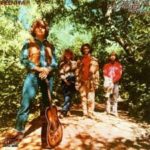 is the third studio album by American rock and roll band Creedence Clearwater Revival, released in August 1969 after their second release Bayou Country which was released in January of the same year
is the third studio album by American rock and roll band Creedence Clearwater Revival, released in August 1969 after their second release Bayou Country which was released in January of the same year
Phil Spector: Back to Mono
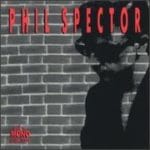 is a box set (4 compact discs or 5 vinyl LPs) compilation of the recorded work of record producer Phil Spector, through the 1960s, released in 1991 by ABKCO as #7118-2. The first track, “To Know Him Is to Love Him,” released in 1958, features Spector performing as part of the group the Teddy Bears.
is a box set (4 compact discs or 5 vinyl LPs) compilation of the recorded work of record producer Phil Spector, through the 1960s, released in 1991 by ABKCO as #7118-2. The first track, “To Know Him Is to Love Him,” released in 1958, features Spector performing as part of the group the Teddy Bears.
Initially a vinyl album-sized package, the box contained a booklet with photographs, complete song lyrics, discographical information, and a reproduction of the essay on Spector by Tom Wolfe, “The First Tycoon of Teen.”
The package also contained a small, round, red “Back to Mono” pin. Back to Mono surveys recordings leading up to and featuring the Wall of Sound, Spector’s famed production trademark.
Led Zeppelin: Led Zeppelin II
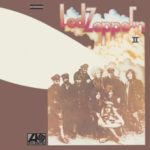 is the eponymous second studio album by the English rock band Led Zeppelin, released on 22 October 1969 in the United States and on 31 October 1969 in the United Kingdom by Atlantic Records. Recording sessions for the album took place at several locations in both the United Kingdom and North America from January to August 1969.
is the eponymous second studio album by the English rock band Led Zeppelin, released on 22 October 1969 in the United States and on 31 October 1969 in the United Kingdom by Atlantic Records. Recording sessions for the album took place at several locations in both the United Kingdom and North America from January to August 1969.
The album’s production was credited to the band’s lead guitarist and songwriter Jimmy Page, and it also served as Led Zeppelin’s first album to utilise the recording techniques of the engineer Eddie Kramer. Incorporating several elements of blues and folk music, Led Zeppelin II exhibited the band’s evolving musical style of blues-derived material and their guitar riff-based sound.
It has been described as the band’s heaviest album. Led Zeppelin II was a commercial success, and was the band’s first album to reach number one on charts in the UK and the US. In 1970, the album’s cover designer David Juniper was nominated for a Grammy Award for Best Recording Package.
Elton John: Goodbye Yellow Brick Road
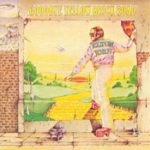 is the seventh studio album by Elton John, released in 1973. The album proved to be extremely popular, selling over 30 million copies worldwide, and is regarded as one of his best. It was recorded at the Château d’Hérouville in France after problems recording at the intended location of Jamaica.
is the seventh studio album by Elton John, released in 1973. The album proved to be extremely popular, selling over 30 million copies worldwide, and is regarded as one of his best. It was recorded at the Château d’Hérouville in France after problems recording at the intended location of Jamaica.
Among the 17 tracks, the album contains the hits “Candle in the Wind”, “Bennie and the Jets”, “Goodbye Yellow Brick Road” and “Saturday Night’s Alright for Fighting” plus “Funeral for a Friend/Love Lies Bleeding” and “Harmony”.
Originally intended to be a regular single album, the move to the château from Jamaica provided John and his band with a great deal of creative inspiration, and an abundance of quality material was produced. This situation led to the decision to release the new material as a double album (LP).
Otis Redding: The Dock of the Bay
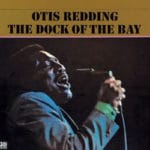 is the first of a number of posthumously released Otis Redding albums, and his seventh studio album.
is the first of a number of posthumously released Otis Redding albums, and his seventh studio album.
It contains a number of singles and B-sides dating back to 1965 and one of his best known songs, the posthumous hit “(Sittin’ On) The Dock of the Bay”.
Produced by Steve Cropper.
Paul McCartney/Wings: Band on the Run
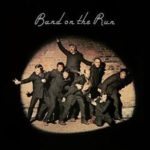 is the third studio album by Paul McCartney and Wings, released in December 1973. It marked the fifth album by Paul McCartney since his departure from the Beatles in April 1970. Although sales were modest initially, its commercial performance was aided by two hit singles – “Jet” and “Band on the Run” – such that it became the top-selling studio album of 1974 in the United Kingdom and Australia; in addition to revitalising McCartney’s critical standing. It remains McCartney’s most successful album and the most celebrated of his post-Beatles works. The majority of Band on the Run was recorded at EMI’s studio in Lagos, Nigeria, as McCartney wanted to make an album in an exotic locale.
is the third studio album by Paul McCartney and Wings, released in December 1973. It marked the fifth album by Paul McCartney since his departure from the Beatles in April 1970. Although sales were modest initially, its commercial performance was aided by two hit singles – “Jet” and “Band on the Run” – such that it became the top-selling studio album of 1974 in the United Kingdom and Australia; in addition to revitalising McCartney’s critical standing. It remains McCartney’s most successful album and the most celebrated of his post-Beatles works. The majority of Band on the Run was recorded at EMI’s studio in Lagos, Nigeria, as McCartney wanted to make an album in an exotic locale.
Shortly before departing for Lagos, however, drummer Denny Seiwell and guitarist Henry McCullough left the group; with no time to recruit replacements, McCartney went into the studio with just his wife Linda and Denny Laine, doubling on drums, percussion and most of the lead guitar parts himself as well as bass.
On arriving, it was discovered that the studio was below standard, and conditions in Nigeria were tense and difficult; the McCartneys were robbed at knifepoint, during which a bag containing unfinished song lyrics and demo tapes was taken. After the band’s return to England, final overdubs and further recording were carried out in London, mostly at AIR Studios.
The Zombies: Odessey and Oracle
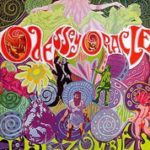 is the second studio album by the English rock band The Zombies. It was originally released in April 1968, on the label CBS. The album was recorded over a period of three months between June and August 1967, in sessions that took place at Abbey Road and Olympic Studios, in London. “Time of the Season” was released as a single and became a surprise hit in early 1969. Odessey and Oracle was recorded in 1967 after The Zombies signed a recording contract with the CBS label.
is the second studio album by the English rock band The Zombies. It was originally released in April 1968, on the label CBS. The album was recorded over a period of three months between June and August 1967, in sessions that took place at Abbey Road and Olympic Studios, in London. “Time of the Season” was released as a single and became a surprise hit in early 1969. Odessey and Oracle was recorded in 1967 after The Zombies signed a recording contract with the CBS label.
They began work on the album in June 1967. Nine of the twelve songs were recorded at EMI’s Abbey Road Studios. “Friends of Mine” was recorded on 1 June, “A Rose for Emily” was started on 1 June and completed on 10 July (take 5 reduction of take 3), “This Will Be Our Year” was recorded on 2 June (take 4) and 15 August (horn overdub), “Hung Up on a Dream” was recorded on 10–11 July (take 7 reduction of take 3), and “Butcher’s Tale (Western Front 1914)” was recorded on 20 July (take 1).
In late July, when Abbey Road was unavailable, The Zombies temporarily shifted base to Olympic Studios where they recorded “Beechwood Park”, “Maybe After He’s Gone” and “I Want Her, She Wants Me”. They returned to Abbey Road Studios in mid-August to record “Care of Cell 44” (take 5 reduction of take 4) and “Brief Candles” (take 10 reduction of take 9) on 16–17 August and “Time of the Season” (August, date unknown). The sessions ended in November and the final track to be recorded was “Changes” (take 5) on 7 November 1967.
Because the album was recorded to a tight budget and deadline, The Zombies worked quickly in the studio, having rehearsed rigorously beforehand. This meant that there would be no outtakes or unused songs recorded during the sessions. Cello and Mellotron parts were added to “A Rose for Emily” but discarded at the final mixing stage. Colin Blunstone and Paul Atkinson felt disillusioned and tempers flared during the recording of “Time of the Season”. Blunstone was not at all keen on the song. When writer Rod Argent insisted that he sing it a certain way, Blunstone’s patience snapped and he effectively told Argent to sing it himself. Blunstone finally sang the vocal as required.
The Mamas and the Papas: If You Can Believe Your Eyes and Ears
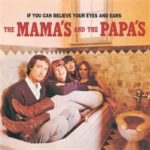 the 1966 debut album by The Mamas & the Papas. As they developed and incorporated more of their own social lives into their music, the Mamas and the Papas became the model for other dysfunctionally self-involved groups like Fleetwood Mac.
the 1966 debut album by The Mamas & the Papas. As they developed and incorporated more of their own social lives into their music, the Mamas and the Papas became the model for other dysfunctionally self-involved groups like Fleetwood Mac.
But none of that is evident on their 1966 debut, If You Can Believe Your Eyes and Ears; rather, it’s the quartet’s dreamy vocal interaction that is the highlight here. “California Dreamin'” is a touching honeymoon of a song; and its follow-up, “Monday Monday,” is much the same–though it comes this close to overwhelming sappiness. “Spanish Harlem,” “In Crowd,” and Mama Cass Elliott’s lead on the Beatles’ “I Call Your Name” are just as enjoyable.
Though the accompanying music on this album was not the focus, it’s every bit as strong as the vocal arrangements, with Larry Knetchel, Joe Osborne, and Hal Blaine handling the chores here.
Jefferson Airplane: Surrealistic Pillow
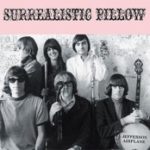 The second album by American rock band Jefferson Airplane, released on February 1, 1967, by RCA Victor (LSP-3766 [stereo] and LPM-3766 [mono]). It is the first album by the band with vocalist Grace Slick and drummer Spencer Dryden.
The second album by American rock band Jefferson Airplane, released on February 1, 1967, by RCA Victor (LSP-3766 [stereo] and LPM-3766 [mono]). It is the first album by the band with vocalist Grace Slick and drummer Spencer Dryden.
The album peaked at number three on the Billboard album chart and has been certified a gold album by the RIAA. Original drummer Alexander “Skip” Spence had left the band in mid-1966. He was soon replaced by Dryden, an experienced Los Angeles jazz drummer and the half-nephew of Charlie Chaplin.
New female vocalist Slick, formerly with another San Francisco rock band the Great Society, joined the Airplane in the fall of 1966. Slick, Dryden, male lead vocalist Marty Balin, guitarist-vocalist-songwriter Paul Kantner, lead guitarist (and occasional vocalist) Jorma Kaukonen, and bassist Jack Casady formed the core of the best-known line-up of the group, which remained stable until Dryden’s departure in early 1970. The album is considered to be one of the quintessential works of the early psychedelic rock and 1960s counterculture eras.
Janis Joplin: Pearl
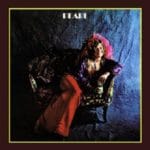 is the second and final solo studio album by Janis Joplin, released posthumously on Columbia Records, catalogue KC 30322, in January 1971. It was also released simultaneously in a 4 channel Quadraphonic format in the U.S., catalogue number CQ 30322, and in Japan as SOPN 90 and a foil type cover with obi as SOPN 44005.
is the second and final solo studio album by Janis Joplin, released posthumously on Columbia Records, catalogue KC 30322, in January 1971. It was also released simultaneously in a 4 channel Quadraphonic format in the U.S., catalogue number CQ 30322, and in Japan as SOPN 90 and a foil type cover with obi as SOPN 44005.
It was the final album with her direct participation, and the only Joplin album recorded with the Full Tilt Boogie Band, her final touring unit. It peaked at number one on the Billboard 200, holding that spot for nine weeks. It has been certified quadruple platinum by the RIAA. album has a more polished feel than the albums she recorded with Big Brother and the Holding Company and the Kozmic Blues Band due to the expertise of producer Paul A. Rothchild and her new backing musicians. Rothchild was best known as the recording studio producer of The Doors, and worked well with Joplin, calling her a producer’s dream.
Together they were able to craft an album that showcased her extraordinary vocal talents. They used Sunset Sound Recorders in Los Angeles. The Full Tilt Boogie Band were the musicians who accompanied her on the Festival Express, a concert tour by train of Canada, in the summer of 1970. Many of the songs on this album were recorded on the concert stage in Canada two months before Joplin and the band started their Los Angeles recording sessions.
The band also appeared twice on The Dick Cavett Show. They also played many American cities, both before and after Festival Express, although no recordings of those concerts have been officially released. All nine tracks that she sings on were personally approved and arranged by Joplin. Pearl features the number one hit “Me and Bobby McGee”, on which she played acoustic guitar, written by Kris Kristofferson and Fred Foster; “Trust Me”, by Bobby Womack, written for Joplin; Howard Tate’s “Get It While You Can”, showcasing her vocal range; and the original songs “Move Over” and “Mercedes Benz”, the latter co-written by Joplin, Bobby Neuwirth and Michael McClure. Joplin sang on all tracks except “Buried Alive in the Blues”, which remained a Full Tilt Boogie instrumental because she died before adding vocals, but she approved the instrumental track.
The song’s writer Nick Gravenites was offered the opportunity to sing it as a tribute to Joplin, but he turned it down. The recording sessions, starting in early September, ended with Joplin’s untimely death on October 4, 1970. Her final session, which took place on Thursday, October 1 after a break of several days, yielded her a cappella “Mercedes Benz.” It was the last song she recorded before her death. The album cover, photographed by Barry Feinstein in Los Angeles, shows Joplin reclining on her Victorian era loveseat with a drink in her hand.
The Beatles: Rubber Soul
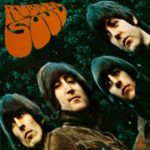 is the sixth studio album by the English rock band the Beatles. It was released on 3 December 1965 in the United Kingdom, on EMI’s Parlophone label, accompanied by the non-album double A-side single “Day Tripper” / “We Can Work It Out”. The original North American version of the album was altered by Capitol Records to include a different selection of tracks.
is the sixth studio album by the English rock band the Beatles. It was released on 3 December 1965 in the United Kingdom, on EMI’s Parlophone label, accompanied by the non-album double A-side single “Day Tripper” / “We Can Work It Out”. The original North American version of the album was altered by Capitol Records to include a different selection of tracks.
Rubber Soul met with a highly favourable critical response and topped record charts in Britain and the United States for several weeks. Often referred to as a folk rock album, Rubber Soul incorporates a mix of pop, soul and folk musical styles. The title derives from the colloquialism “plastic soul”, which referred to soul played by English musicians. After the British version of A Hard Day’s Night, it was the second Beatles LP to contain only original material.
For the first time in their career, the band were able to record the album over a continuous period, uninterrupted by touring commitments. The songs demonstrate the Beatles’ increasing maturity as lyricists and, in their incorporation of brighter guitar tones and new instrumentation such as harmonium, sitar and fuzz bass, the group striving for more expressive sounds and arrangements for their music.
The project marked the first time that the band explored the possibilities of the album as an artistic work, an approach they continued to develop with Revolver and Sgt. Pepper’s Lonely Hearts Club Band. The North American version of Rubber Soul contained ten of the fourteen new songs, supplemented by two tracks withheld from the band’s Help! album. The four songs omitted by Capitol, including the February 1966 single “Nowhere Man”, instead appeared on the North American-only release Yesterday and Today. Rubber Soul was highly influential on the Beatles’ peers, leading to a widespread focus away from singles and onto creating albums of consistently high-quality songs. It has been recognized by music critics as an album that opened up the possibilities of pop music in terms of lyrical and musical scope, and as a key work in the development of styles such as psychedelia and progressive rock.
Nuggets: Original Artyfacts From the First Psychedelic Era,
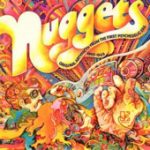 is a groundbreaking compilation album of American psychedelic and garage rock singles released in the mid-to-late 1960s. It was assembled by Lenny Kaye, later lead guitarist for the Patti Smith Group, under the supervision of Jac Holzman, founder of Elektra Records. Kaye initially conceived the project as series of approximately eight individual LP installments, each focusing on US geographical regions, but Elektra convinced him that one 2-disc LP would be a more commercially viable format. The resulting double album was released on LP by Elektra in 1972 with liner notes by Kaye that contained one of the first uses of the term “punk rock”. It was reissued with a new cover design by Sire Records in 1976. In the 1980s Rhino Records issued Nuggets in a series of fifteen installments, and in 1998 as a 4-cd box set.
is a groundbreaking compilation album of American psychedelic and garage rock singles released in the mid-to-late 1960s. It was assembled by Lenny Kaye, later lead guitarist for the Patti Smith Group, under the supervision of Jac Holzman, founder of Elektra Records. Kaye initially conceived the project as series of approximately eight individual LP installments, each focusing on US geographical regions, but Elektra convinced him that one 2-disc LP would be a more commercially viable format. The resulting double album was released on LP by Elektra in 1972 with liner notes by Kaye that contained one of the first uses of the term “punk rock”. It was reissued with a new cover design by Sire Records in 1976. In the 1980s Rhino Records issued Nuggets in a series of fifteen installments, and in 1998 as a 4-cd box set.
Rolling Stones: Aftermath
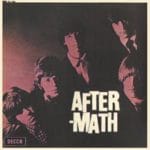 Released in April 1966 by Decca Records, is the fourth British studio album by the Rolling Stones. It was issued in the United States in June 1966 by London Records as the group’s sixth American album.
Released in April 1966 by Decca Records, is the fourth British studio album by the Rolling Stones. It was issued in the United States in June 1966 by London Records as the group’s sixth American album.
The album is considered an artistic breakthrough for the band: it is the first to consist entirely of Mick Jagger–Keith Richards compositions, while Brian Jones played a variety of instruments not usually associated with their music, including sitar, Appalachian dulcimer, marimbas and Japanese koto, as well as guitar, harmonica and keyboards, though much of the music is still rooted in Chicago electric blues.
It was the first Rolling Stones album to be recorded entirely in the US, at the RCA Studios in California, and their first album released in true stereo. It is also one of the earliest rock albums to eclipse the 50-minute mark, and contains one of the earliest rock songs to eclipse the 10-minute mark (“Goin’ Home”).
The Jimi Hendrix Experience: Electric Ladyland
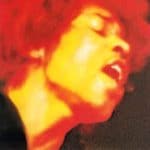 is the third and final studio album by English-American rock band the Jimi Hendrix Experience, released in October 1968 by Track Records/Polydor, and Reprise Records in North America.
is the third and final studio album by English-American rock band the Jimi Hendrix Experience, released in October 1968 by Track Records/Polydor, and Reprise Records in North America.
The double album was the only record from the band produced by Jimi Hendrix. By mid-November, it had charted at number one in the United States, where it spent two weeks at the top spot. Electric Ladyland was the Experience’s most commercially successful release and their only number one album. It peaked at number six in the UK, where it spent 12 weeks on the chart.
Electric Ladyland included a cover of the Bob Dylan song, “All Along the Watchtower”, which became the Experience’s highest-selling single and their only top 40 hit in the US, peaking at number 20; the single reached number five in the UK. Although the album confounded critics in 1968, it has since been viewed as Hendrix’s best work and one of the greatest rock records of all time.
Paul Simon: Graceland
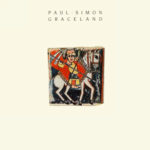 The seventh solo studio album by American singer-songwriter Paul Simon. Produced by Simon and Roy Halee, the album was released on August 25, 1986, by Warner Bros. Records. In the early 1980s, Simon’s solo career had hit a low point. Following a very successful but fraught reunion with former partner Art Garfunkel, Simon’s marriage fell apart and his previous record, Hearts and Bones (1983), was a significant commercial disappointment. In 1984, after a period of depression, Simon became fascinated with a bootleg cassette of South African township music.
The seventh solo studio album by American singer-songwriter Paul Simon. Produced by Simon and Roy Halee, the album was released on August 25, 1986, by Warner Bros. Records. In the early 1980s, Simon’s solo career had hit a low point. Following a very successful but fraught reunion with former partner Art Garfunkel, Simon’s marriage fell apart and his previous record, Hearts and Bones (1983), was a significant commercial disappointment. In 1984, after a period of depression, Simon became fascinated with a bootleg cassette of South African township music.
He planned a trip to Johannesburg in the new year with Halee, where he spent two weeks recording with South African musicians. Recorded in 1985 and 1986, Graceland features an eclectic mixture of musical styles, including pop, rock, a cappella, zydeco, isicathamiya, and mbaqanga.
Simon created new compositions inspired by the recordings made in Johannesburg, collaborating with both African and American artists. Simon faced controversy for seemingly breaking the cultural boycott imposed by the rest of the world against South Africa because of its policy of apartheid. In addition, some critics viewed Graceland as an exploitive appropriation of their culture. Following its completion, Simon toured alongside South African musicians, combining the music of Graceland and their own music.
Despite the controversy, Graceland was a major commercial hit, becoming Simon’s most successful studio album. His highest-charting effort in over a decade, Simon’s return to the forefront of popular music was considered a remarkable comeback. It was lauded by music critics, won the 1987 Grammy Award for Album of the Year, and is estimated to have sold up to 16 million copies worldwide.
Graceland has frequently been called one of the best albums of the 1980s, and is present on lists of greatest albums created by numerous publications. It was added to the National Recording Registry in 2007, having been judged to meet the registry’s admission criterion of being “culturally, historically, or aesthetically important.”
Chuck Berry: The Great Twenty-Eight
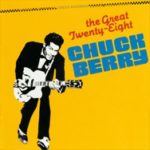 A compilation album by Chuck Berry, released in 1982 on Chess Records. survey of Berry’s first decade of recording on Chess Records, it contains 21 singles along with six of their B-sides and one album track from Chuck Berry in London.
A compilation album by Chuck Berry, released in 1982 on Chess Records. survey of Berry’s first decade of recording on Chess Records, it contains 21 singles along with six of their B-sides and one album track from Chuck Berry in London.
Of those singles, eleven were Top 10 hits on the Billboard R&B singles chart and ten were Top 40 hits on the Billboard Hot 100.
Carole King: Tapestry
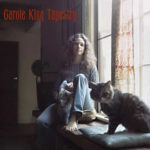 The second album by American singer-songwriter Carole King, released in 1971 on Ode Records and produced by Lou Adler. It is one of the best-selling albums of all time, with over 25 million copies sold worldwide. In the United States, it has been certified Diamond by the RIAA with more than 10 million copies sold.
The second album by American singer-songwriter Carole King, released in 1971 on Ode Records and produced by Lou Adler. It is one of the best-selling albums of all time, with over 25 million copies sold worldwide. In the United States, it has been certified Diamond by the RIAA with more than 10 million copies sold.
It received four Grammy Awards in 1972, including Album of the Year. The lead single from the album — “It’s Too Late”/”I Feel the Earth Move” — spent five weeks at number one on both the Billboard Hot 100 and Easy Listening charts. In 2003, Tapestry was ranked number 36 on Rolling Stone list of the 500 greatest albums of all time. King wrote or co-wrote all of the songs on the album, several of which had already been hits for other artists such as Aretha Franklin’s “(You Make Me Feel Like) A Natural Woman” and The Shirelles’ “Will You Love Me Tomorrow” (in 1960).
Three songs were co-written with King’s ex-husband Gerry Goffin. James Taylor, who encouraged King to sing her own songs and who also played on Tapestry, would later have a number one hit with “You’ve Got a Friend”. Two songs were co-written with Toni Stern: “It’s Too Late” and “Where You Lead”.
The Band: Music from Big Pink
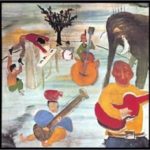 The debut studio album by the Band. Released in 1968, it employs a distinctive blend of country, rock, folk, classical, R&B, and soul. The music was composed partly in “Big Pink”, a house shared by Rick Danko, Richard Manuel and Garth Hudson in West Saugerties, New York.
The debut studio album by the Band. Released in 1968, it employs a distinctive blend of country, rock, folk, classical, R&B, and soul. The music was composed partly in “Big Pink”, a house shared by Rick Danko, Richard Manuel and Garth Hudson in West Saugerties, New York.
The album itself was recorded in studios in New York and Los Angeles in 1968,[2] and followed the band’s backing of Bob Dylan on his 1966 tour (as the Hawks) and time spent together in upstate New York recording material that was officially released in 1975 as The Basement Tapes, also with Dylan. The cover artwork is a painting by Dylan.
Background and Big Pink house
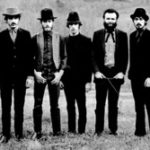 The Band began to create their distinctive sound during 1967, when they improvised and recorded with Bob Dylan a huge number of cover songs and original Dylan material in the basement of a pink house in West Saugerties, New York, located at 56 Parnassus Lane (formerly 2188 Stoll Road). The house was built by Ottmar Gramms, who bought the land in 1952.
The Band began to create their distinctive sound during 1967, when they improvised and recorded with Bob Dylan a huge number of cover songs and original Dylan material in the basement of a pink house in West Saugerties, New York, located at 56 Parnassus Lane (formerly 2188 Stoll Road). The house was built by Ottmar Gramms, who bought the land in 1952.
The house was newly built when Rick Danko found it as a rental. Danko moved in along with Garth Hudson and Richard Manuel in February 1967. The house became known locally as “Big Pink’ for its pink siding. The house was subsequently sold by Gramms in 1977, and since 1998, it has been a private residence.
The Band’s manager Albert Grossman (who was also Dylan ‘s manager) approached Capitol Records to secure a record deal for a group still informally described as “Dylan’s backing band”. Stanley Gortikov at Capitol signed The Band—initially under the name The Crackers. Armed with news of a recording deal for the group, they lured Levon Helm back from the oil rigs where he had been working, to Woodstock where he took up his crucial position in the Band, singing and playing drums. Helm’s return coincided with a ferment of activity in Big Pink as the embryonic Band not only recorded with Dylan but also began to write their own songs, led by guitarist Robbie Robertson.
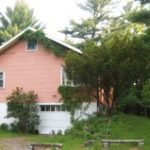 After meeting with producer John Simon, the Band started to record their debut album in Manhattan at A&R Studios, on the 7th floor of 799 7th Avenue at 52nd Street in the early months of 1968. The Band recorded “Tears of Rage”, “Chest Fever”, “We Can Talk”, “This Wheel’s On Fire” and “The Weight” in two sessions. Robertson has said that when Simon asked them how they wanted it to sound, they replied, “Just like it did in the basement.”
After meeting with producer John Simon, the Band started to record their debut album in Manhattan at A&R Studios, on the 7th floor of 799 7th Avenue at 52nd Street in the early months of 1968. The Band recorded “Tears of Rage”, “Chest Fever”, “We Can Talk”, “This Wheel’s On Fire” and “The Weight” in two sessions. Robertson has said that when Simon asked them how they wanted it to sound, they replied, “Just like it did in the basement.”
Capitol, pleased with the initial recording session, suggested that the group move to Los Angeles to finish recording their first album at Capitol Studios. They also cut some material at Gold Star Studios on Santa Monica Boulevard. The songs on Big Pink recorded in L.A. were “In A Station”, “To Kingdom Come”, “Lonesome Suzie”, “Long Black Veil” and “I Shall Be Released
The Doors: The Doors
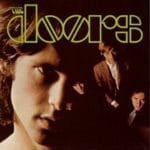 The debut album by the American rock band the Doors, released on January 4, 1967. The album features their breakthrough single “Light My Fire” and the lengthy song “The End” with its Oedipal spoken word section.
The debut album by the American rock band the Doors, released on January 4, 1967. The album features their breakthrough single “Light My Fire” and the lengthy song “The End” with its Oedipal spoken word section.
The Doors was not only one of the albums most central to the progression of psychedelic rock; it is also one of the most acclaimed recordings in all of popular music. In 2012, it was ranked number 42 in Rolling Stone magazine’s 500 greatest albums of all time.
The original album has sold 20 million copies. The Doors’ final lineup was formed in mid-1965 after Ray Manzarek’s two brothers left and Robby Krieger joined. Krieger had only been playing the electric guitar for six months when he was invited to become a member of the band. The group also featured jazz-influenced drummer John Densmore and the charismatic, and later iconic Jim Morrison on vocals. The band was initially signed to Columbia Records under a six-month contract but agreed to a release after the record company failed to secure a producer for the album.
After being released from the label, the Doors played club venues, including the London Fog and Whisky a Go Go, until they were signed to Elektra Records by Jac Holzman.
